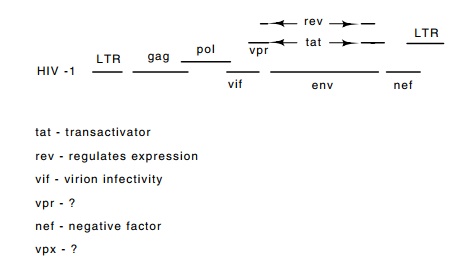Chapter: Genetics and Molecular Biology: Generating Genetic Diversity: Antibodies
AIDS Virus
The AIDS Virus
The AIDS virus is also known as the human
immunodeficiency virus, or HIV, because of its effects on the immune system. It
is a retrovirus that ultimately proves lethal to humans. The lethal effects of
this virus derive from its crippling of the immune system by its killing of the
CD4 helper T cells. Without these cells, the B cells cannot multiply in
response to newly present antigens, and ultimately the infected person dies
from infections that normally are of little consequence. The virus binds the
CD4 cells with a viral coat protein specific for a transmem-brane cellular
protein unique to these cells and a few other cell types in the human body.
After binding the membrane coat of the virus fuses with the membrane of the
cell and the RNA is released within the cell
Figure
20.12 Gene products of HIV.

where it frequently integrates into the chromosome
after its conversion to double-stranded DNA. A protein encoded by the virus or
provirus (Fig. 20.12) enables the infected cell to fuse with other uninfected
T4 cells, at least in cell culture. Both infected cells and cells in fusion
complexes ultimately are killed.
The AIDS virus is considerably more complex than
the more simple retroviruses. In addition to the gag, pol, and env genes, the virus contains five
additional open reading frames that encode proteins that activate or repress
viral protein synthesis or play other roles in the viral infection.
Related Topics